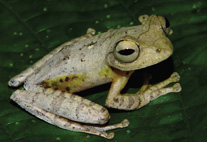Abstract
Historically, Telmatoscopus Eaton, 1904 has been a nomenclaturally and taxonomically problematic taxon as different authors have used different type species to define their concepts of the genus. Here it is shown that Pericoma advena Eaton, 1893 is the valid type species rather than Pericoma morula Eaton, 1893. Furthermore, the genus Seoda Enderlein, 1935 is revived for the genus comprising Pericoma labeculosa Eaton, 1893, P. morula and their relatives. The differences between Telmatoscopus and Seoda are described in detail based on historical and freshly collected material of the three putative type species. Four new synonymies are proposed: Panimerus havelkai Wagner, 1975 and Telmatoscopus seguyi Vaillant, 1990 are synonymized with Telmatoscopus advena, and Telmatoscopus incanus Nielsen, 1964 and Telmatoscopus vaillanti Withers, 1986 are synonymized with Seoda morula.
A potential phylogenetic pattern in the male genital sclerites is discussed in detail. In Telmatoscopus, the jointed appendages of the gonocoxally derived parameral complex are separate small sclerites found near the bases of the distiphallic lobes of the aedeagus. In Seoda, they are fused medially to form a small, moveable triangular or arrow-shaped sclerite. Medial parameral sclerite fusion in Psychodinae is otherwise known to occur only in Pericomaini and the paramormiine genus Psychomasina Ježek, 2004; however, many genera of Paramormiini show an apparently intermediate condition where the parameres are fused in one end to form a V- or U-shaped "furca". It is hypothesized that Paramormiini is paraphyletic with respect to Pericomaini, as suggested in a previous phylogenetic hypothesis based on molecular data.

